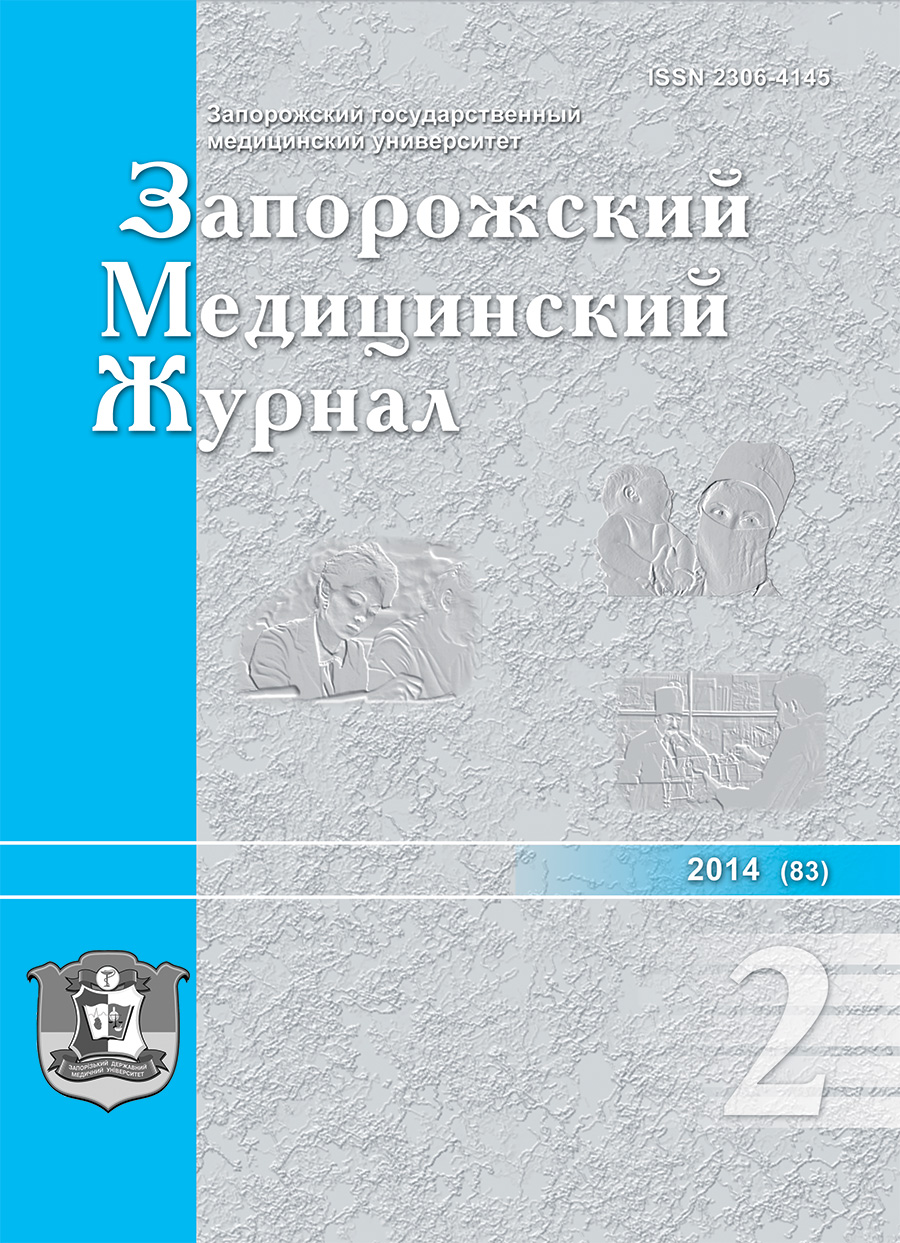Modern tactics of observation the postpartum purulent-septic complications
DOI:
https://doi.org/10.14739/2310-1210.2014.2.25431Keywords:
postpartum purulent-septic complications, diagnosis' treatment, gynecological department of Zaporozhye Regional Clinical HospitalAbstract
Introduction.
Postpartum purulent-septic diseases remain an urgent problem of modern obstetrics and are one of the important causes of maternal mortality. The presence of lethal proceeds from septic complications in the postpartum period is above all due to late diagnosis of this complication, delayed acceptance decision on the need and extent of surgery, inadequate capacity of syndromic and intensive care.
The aim of research.
The clinical analysis of different methods of diagnosis and treatment of patients with postpartum purulent-septic complications, obtained during the period from January 2011 to June 2013, based on work of gynecological department of Zaporozhye Regional Clinical Hospital.
Materials and methods.
During the period from January 2011 to June 2013 in the gynecological department of Zaporozhye Regional Clinical Hospital specialized medical care of 30 patients with purulent-septic complications in the postpartum period have been provided. 5 women in labor (16.67%) were transferred from the maternity homes of Zaporozhye city and the rest (83.33%) from different regions.
Results.
All patients admitted to gynecology department of Zaporozhye Regional Clinical Hospital were conducted massive antibiotic, syndromic therapy. 11 additional patients had an operation vacuum aspiration contents of the uterus, and 5 mothers had absolute indications for surgery: hysterectomy with uterine tube (2 patients diagnosed - septic condition, 3 cases - failure scar on the uterus after cesarean).
Conclusion.
1. Delivery by cesarean section surgery significantly increases the risk of developing pyo-septic complications. Prompt delivery should be made according to strict indications, using modern sutures , intraoperative blood loss objective assessment (if necessary with timely appointment of replacement therapy and anti-anemic ), with mandatory drainage of the abdominal cavity with repeated cesarean operations .
2. Using the entire set of clinical, laboratory, and additional methods (procalcitonin) study contribute to the earliest possible diagnosis of purulent -septic complications in the postpartum period .
3. Upon receipt of objective data for developing postpartum purulent- septic complications of a woman in labor is subject to immediate transfer to specialized hospitals of the 3rd levels of care. Optimal time transfer is 2-3 days postpartum.
4. Identifying patients with medium and high risk of developing of the pyo-septic complications should be performed on the stage and antenatal clinic surveillance in the family doctor.
References
Saveleva H.M., Serov V.N., Suhih H.T. Аkusherstvo i hinekolohiia: Klinicheskie rekomendatsii [Obstetrics and Gynecology: Clinical guidelines]. Мoscow, HEOTAR-Меdia, 2009. 221 p.
Ailamazian E.K., Kulakov V.I., Saveleva H.M., Radzynsksii B.E. Akusherstvo: Natsyonalnoe rukovodstvo [Obstetrics: National Guidelines ]. Мoscow, HEOTAR-Меdia, 2007. 1200 p.
Nakaz МОZ vid 31.12.2004 № 676 "Pro zatverdzhennia klinichnyh protoliv z akusherskii ta hinekolohichnoi dopomohy"
Bartels А.V. Poslerodovye infekzyonnye zabolevaniia [Postnatal infections]. Мoscow, Меdyzyna. 1973. 126 p.
Downloads
How to Cite
Issue
Section
License
Authors who publish with this journal agree to the following terms:
Authors retain copyright and grant the journal right of first publication with the work simultaneously licensed under a Creative Commons Attribution License that allows others to share the work with an acknowledgement of the work's authorship and initial publication in this journal. 
Authors are able to enter into separate, additional contractual arrangements for the non-exclusive distribution of the journal's published version of the work (e.g., post it to an institutional repository or publish it in a book), with an acknowledgement of its initial publication in this journal.
Authors are permitted and encouraged to post their work online (e.g., in institutional repositories or on their website) prior to and during the submission process, as it can lead to productive exchanges, as well as earlier and greater citation of published work (See The Effect of Open Access)

